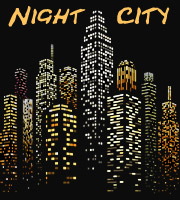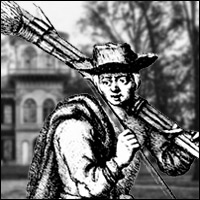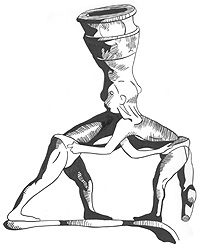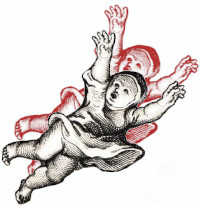Written in 1933-34, originally rejected by Weird Tales, published posthumously in the Magazine of Horror in 1967, currently available in The Coming of Conan the Cimmerian by Del Rey, 2003, pages 303-317
His Take
The Dead Writer Who Speaks to Living Artists
I believe Victoria is reviewing The Vale of Lost Women via the Guttenberg Project. I am reading from the Del Rey edition, illustrated by Mark Schultz. I mention this because, since the 1960s—and going back to the 1930s—fantasy artists have very often chosen Howard’s Conan stories to ply their trade. Today Howard’s work is largely kept alive by the comic industry, and I know two independent artists who feature Conan illustrations and paintings in their portfolio. As a boy this factor just wowed me and convinced me to purchase the books. As a man I can see that Howard struck a primal cord among the male readership across numerous generations, and has disproportionately inspired painters and illustrators.
As a writer and reviewer what do I now appreciate about this phenomenon as I look over Schultz’s four black & whites for The Vale of Lost Women?
The first piece has Livia, a beautiful, soft [a trifle plump by modern standards], civilized, blonde, cringing on her knees and heels as Conan, a monstrous, leering savage, clutches her wrist with one cruel hand, looking like a cross between Tarzan and Michael Myers from the Halloween horror franchise as recently depicted by psycho-director Rob Zombie. Rape in progress before a pile of bleached skulls in a tropical hut…
The second piece has Livia escaping naked from the fiendish barbarian and his savage black henchmen—naked and pale in the night—on the back of a black horse.
The third piece has a great bat-like creature engulfing Conan.
The fourth piece has Livia alone in a star bright glade, garlanded with white flowers she has plucked for herself, as three devilish night-haired women slink toward her.
The final piece is an illustrative bookend, a savage crest of spear and shield garlanded with flowers—the flowers dominant.
I really wanted to give Mark his due credit for the wonderful work he did for this story. I also thought that my brief and rather ignorant [I don’t even know how these guys buy their ink] summary of his work might make the point better than a simple statement, that Howard wrote horror when he had Conan on the page. I don’t know who came up with ‘the sword and sorcery’ sub-genre to describe his work. It was not necessary. Conan, as a character, is more a vehicle for multi-layered horror stories than a male fantasy: the horror of battle; the horror of social inequity; the horror of the hideous unknown; and in this tale, the horror that is Conan. Apparently, Howard, two years into writing Conan, took a step back and said to himself, “He may be my penny per word hero, but he would stride horrifically into any civilized life.”
‘Tomorrow Night it Will Be Conan’s Bed You Warm’
The Vale of Lost Women is a three chapter short. In my take, I will only address the first two sections. Upon re-reading the last chapter for about the sixth time with an eye toward this review, I was impressed by the feminine quality of this final chapter. I could well imagine Victoria having written it. Howard, from his early attempts at empathizing with Livia through the naked luridly generic fears of alienation, bondage and rape, seems, at the outset of Chapter 3, to have assumed a kind of deluded feminine outlook. Conan-like, I will leave those womanly concerns for my lady counterpart.
‘Rude Hands’
The Vale of Lost Women may have been rejected as a Conan story by the editor of Weird Tales, not because Conan comes off as a brutal miscegenistic white monster among a world of black fiends, but because this was not a Conan story. This was Livia’s one and only story. Conan was nothing more than the element of the fiendish world she had been carried off to, which she strove to enlist as an ally on purely—even refreshingly in this homogenized day and age—racial grounds.
Livia’s world comes to life vividly in Howard’s hands as she gropes to dumb wakefulness on the eve of the sacrifice of her white virginity to a grotesquely fat toad-like black king. The white fear of blacks rampant in Howard’s day however, was outweighed by the lack of masculine characteristics and parasitic nature evoked by the description of King Bajujh. The Jim Crow fictional shtick, so overworked in Howard’s time, soon falls way like a veil, as the man who Livia beseeches to rescue her from this disgusting king, turns out to be no better than those who currently own her—just more violent; in effect, worse.
One of Conan’s statements in response to Livia offering herself to him in return for her freedom should suffice: “…I have looked at black sluts until I am sick at the guts.”
Such are the sensibilities of poor Livia’s ‘knight in shining armor.’
Howard, it seems to me, was enthralled with the idea of grass roots bandits striking back at the greater society. In our review of Queen of the Black Coast, which chronologically, in terms of Conan’s career, comes right before this story, I discussed the fact that it was most probably Howard’s version of Bonnie and Clyde. As Howard had grown up in the company and care of some older blacks, he probably had a notion that the black communities of the South [he was a Texan] were one place of refuge for white criminals on the run. The 20th Century interpretation of the Conan character’s status at this point in his career would be as a John Dillinger figure. Conan’s status as a barbarian—and in many of the stories a thief or bandit—is certainly a cloak for Howard’s admiration for Depression Era bank robbers.
‘The Awful Token of His Payment’
There is no need to worry about giving away the second act of the story, for it is cast as inevitable from the outset. The contrast between Chief Conan and King Bajujh, and the crude audacity of the white barbarian, leave no question in the reader’s mind that Conan will betray and kill his host and ally for nothing more than consensual sex with a white woman.
What Livia—who becomes one of Howard’s more realistically conflicted characters—did not consider, was that Conan was going to annihilate an entire community in the most savage fashion just to spread her legs. This realization, that she has given herself up to a worse monster than she could have imagined causes her to recoil from everything, even her wishes.
Conan had warned her that she had been wrong to trust in the protection of ‘soft bellied’ civilized men, and that he could and would protect her if she were willing to pay the price. I cannot go into any more of the story line here without ruining it. Before handing off to Victoria, I would like to close with the observation that Howard never let this be anything other than a horror tale. It does not slip into romance, pointless adventure tropes, plot twists, or polemic.
This is pure atmospheric horror, not with dripping monstrosities and creeping things in the night, but simply the nasty underbelly of humanity and the horrors of the evil that men do, all couched in a fictional world suffused in elder evil. There is never a question in a Conan or Kane story that the day-lit world of civilization is not both bounded by and undermined by mind-blasting evil.
Livia is literally walking naked in an actual man-made hell, which is itself suffused in a cosmic one.
Her Take
WHAT MIGHT HAVE BEEN
Robert Howard’s THE VALE OF LOST WOMEN, reviewed by V.J. WAKS
WHAT MIGHT HAVE BEEN
Robert Howard’s THE VALE OF LOST WOMEN, reviewed by V.J. WAKS
A captive being prepared for God knows what atrocity. An off-screen mutilation of a man. A war council liberally laced with deception and treachery.
GAME OF THRONES?
No; THE VALE OF LOST WOMEN, and that’s all in the first two pages.
It reads like a film pitch. Considering the deep South of Howard’s origins, it would be a pitch over a lunch. Dessert would be pecan pie and Chantilly cream, with a chaser of brandy, straight up.
Stinging and riveting; Vale has all the power of a smack across the face, all the guilty pleasure of a slap across somewhere else. So visual, you think you’re reading a screen play, so visceral and violent you think it’s one for the next installation of DEXTER. Considering the year of its attempted debut, 1934, in Weird Tales, it’s a marvel. Short, sharp with pounding imagery, it’s the briefest of stories wrapped up in luscious acre-covering descriptions—of a young woman once again at the mercy of men, of savage untamed jungle, of glistening dark bodies frenziedly dancing in firelight, of the unstoppable build of dark actions and pitiless intent.
The hardest part of writing a review for VALE is the challenge of not making the review longer than the story itself. The whole story is only about eight pages in length.
Those eight pages pack a punch; they reek with threat. We rush through the froth of rescue—by a man as dangerous and as unpredictable and only slightly less immoral than the vicious warlord of these tribes people, a man with his own death squad—and his own agenda. For here is a hero who can get it done—Conan. The plight of the captive Livia, her desperate plea for her life and freedom is part of the conflict. We see what Conan will make of this.
It’s a brilliant, searing, jaw-dropping palette that Howard provides. His brush strokes are brisk, clean and as sharp and merciless as steel. All too soon, we have a naked woman racing across the land on a horse. All too soon, we follow her to a place of legend and of horror. Alas; so little is given, alas, for the wealth of material here, the imagery and strength of background that Howard does not expand. In this VALE terror comes from the skies and we are forced to witness how a bitter fate is very nearly played out. But our hero turns expectation on its head, for the heroine and for the reader. Again, here is the material that most writers dream of, a story that might have been—and we wonder how and why Howard did not pursue this story and this material to its logical expansion.
For those who write, it is frequently and painfully made apparent how difficult it is to write a short piece, as opposed to a long one. Here in VALE is a primer on how to block out a novel—the story falls into a three/four act format perfectly and the writer starts with a grabbing, intense opening sequence. This is important; the opening page sets both the pace and the feeling of a short piece, setting up the reader for the development that will come. Read this story with this in mind; Howard has provided the Cliff notes version of the skeleton of the story, the basis for the characters, the setting and the arc—all in eight pages. It is interesting to compare this work with THE QUEEN OF THE BLACK COAST. There are elements common to both: the jungle setting, a tribal issue on more than one level, the idea of an aerial threat that must be overcome.
But Livia is the antithesis of Belit; one is timid, inexperienced, overcome by fear and horror, the other a Queen, a combatant, a leader. It is interesting to see what the competition was up to around 1934, which marks the creation date or publication of the two stories. Edgar Rice Burroughs was tossing PIRATES OF VENUS, SWORDS OF MARS, and TARZAN AND THE LION MAN into the world’s adventure hat. FLASH GORDON was revving up.
It couldn’t have been encouraging for Howard; the shortness of the VALE story, and particularly the ending sentences suggest to me that this is a fragment from a work that might have been coming together. The mention Conan makes of getting Livia home safely is a perfect set up for the second act of a novella or short piece where everything of course will go the devil in that act. I wonder what other writers think of this idea—this is a man at a crossroads, a writer who will lose his family soon and soon take his own life.
I invite others who know the series and the man more intimately to comment on this proposal.
As it stands, looking at these two women, the woman that Conan loves deeply is the one in the BLACK COAST tale—the strong, experienced mate. The woman that Conan rejects is the simpering maiden, who, while cultured and intelligent, lacks the street skills and female maturity of the earlier heroine. I think it would be fascinating to chart the women of Conan across the Howard series, and I am very glad that James suggested we look over both of these stories by this remarkable and influential writer. Look for more reviews of Howard’s stories in the coming months in HIS TAKE/HER TAKE.
For now, in this work, we are left to salivate over what may have come from this—if only Howard had let the story play for twenty pages more. What a seed for a novella is here in THE VALE OF LOST WOMEN. In its brevity we have the scenic imagery, the depth, the colossal rendering of danger and corruption that most series dream of. In these few but tantalizing pages, the master shows his mettle and again—he makes us wonder.
Notes
I find it interesting that Victoria [a screenplay writer] finds such rich film material here in Howard's original work, where the screenwriters for the three Conan films ignored everything but his Characters. If she writes the next Conan screenplay we might get to see some Robert E. Howard content in a movie for once.
Howard did write one Conan novel, Hour of The Dragon, in which Conan finds himself paired with a woman that is, temperamentally, midway between Livia and Belit. I only know of one other novel written by Howard, and that was Almuric, a fantasy along the lines of Burroughs' John Carter of Mars series. He did not live long enough to break out of the pulps. Victoria has suggested Red Nails as another Conan review. We aren't done with his dysfunctional love life yet.











